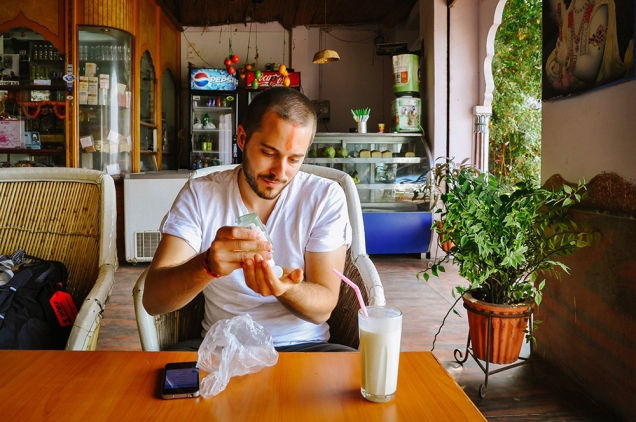As the seat of power of successive dynasties that ruled India, Delhi has always attracted great painters, musicians, dancers and craftsmen from all over the country, but perhaps never more so than today. When the princely states and great landed estates were abolished after Independence, Indian artists lost their traditional patrons, and ever since then have found their new patrons — politicians, government cultural institutes, broadcast media, industrialists and diplomats —concentrated in Delhi. As a result Delhi offers the most varied cultural life of all Indian cities, with the best of court and local traditional styles in dance, music and theatre.

The best way to find out what’s on in a particular week is to look at the cultural pages of the newspapers — the Indian Express on Saturday and the Times of India on Friday carry comprehensive listings, as do the listings magazines the Delhi Diary and The Delhi City.
Delhi’s cultural hub is in the centre of town, between Barakhamba Road and Ferozeshah Road, concentrated around Mandi House Chowk. Here are located the Kamani and FICCI auditoriums and the Shriram Kendra, venues of major cultural performances. Nearby is the Triveni Kala Sangam with its art galleries and theatre; and Rabindra Bhavan, the government-funded cultural academy, which holds art exhibitions and festivals of dance, theatre and music.
Among the big annual events that Delhi stages are four “classical” music and dance festivals —the Shankarlal and Dhrupad festivals in February and March, the Vishnu Digamber festival in Au-gust, and the SPIC-MALAY festival in September. The greatest musicians in India, representing the different gharanas (schools) of Hindustani (North Indian) music, participate. The concerts often beginning late and continue into the night, way beyond the schedule, as the musician warms up and the audience responds. The music most often heard is that derived from the music performed at the North Indian courts.
The gharana (male lineages of musical instruction, usually hereditary) of the court musicians generally traced their ancestry back to Tansen, a musician at the court of Akbar (1556-1605). He is said to have been one of the greatest performers of dhrupad, a vocal genre held by many musicians to be the “purest” form of raga music. Although initially very popular at the courts, during the time of Muhammad Shah (1719-48) dhrupad was sup-planted by khayal. Muhammad Shah’s court musician, Niyamat Khan, is usually credited with popularizing the form (which legend says was invented by Sultan Husain Shargi in the 15th century). – Enjoy Golden Triangle Tour – Including Delhi, Jaipur, Rajasthan
Khayal is now the vocal genre most commonly heard in the concert hall. A khayal composition (bandis or ciz) comprises two short sections, known as sthayi and antara, which are in contrasting registers. Usually two compositions are presented, the first in a slow tempo, known as a “big” (tiara) khayal, the second, a “small” (chota) khayal in a faster tempo, which speeds up towards the end of the performance. A khayal concert starts with a short unmetered section introducing the raga (mode or pitch collection), followed by the ciz, which is in tala (rhythmic cycle), the most common of which is the 16-beat tintal. It is accompanied by the tabla (paired kettledrums) and, traditionally, the bowed lute, sarangi (this is now usually replaced by the harmonium, a small hand-pumped organ introduced to South Asia by French missionaries). The dronelute tambura provides a constant background, sometimes played by a supporting singer and usually tuned to sa and pa (roughly corresponding to the Western doh and soh). The compositions are explored in 0 series of elaborations and improvisations.
Another popular genre often performed on the concert stage, particularly by female vocalists — is thumri. This is a “light-classical” form which developed at the courts of Avadh (present-day Lucknow), consisting of a sung poem performed in a slow tempo with a highly melismatic melodic line. The Hindu texts are highly charged and devotional—even though the singers were usually Muslim — and often mildly erotic and written in a dialect of Hindi called Braj Bhasa. The accompaniment is the same as for a khayal performance.
Instrumental music, particularly of the sitar and sarod (both plucked lutes), follows a slightly different pattern, and draws on both khayal and dhrupad traditions. Compositions are known as gat (analogous to those of khayal); they are preceded by a long alap section, an unmetred presentation of the raga introducing each note in turn, in a similar fashion to that of dhrupad singers. The soloist then uses a variety of improvisational techniques to explore the material presented in the gat, and will usually present two different compositions, the second of which is faster. Instrumentalists usually consider themselves part of the Seniya gharana, which is traced back to Tansen.
Leading dancers of all the main “classical” styles — bharata-natyam, kathak, kathakali, kuchipudi, manipuri, mohiniattam and odissi —give regular concerts in Delhi. Delhi society turns out in force at these events, to see and be seen, and afterwards to catch up on all the gossip and intrigue of the cultural world.
The dance-style you are most likely to see advertised is bharata-natyam. Although it originated in Tamil Nadu, it is now taught and performed across India as well as overseas. It is derived from Tamil temple dance and has been a concert form since the early 20th century.
The female hereditary temple dancers (devadasis) took part in rituals in praise of the temple deity and were considered “married” to the god. This made them auspicious women as they could never become widowed. They would also be the sexual partners of the temple priests and local king (sponsor of the temple). It was this aspect of their duties that outraged Victorian sensibilities and an “anti-nautch” (from the Sanskrit naca, “dance”) was started, culminating in the banning of temple dancing. At the same time, growing Indian nationalism was seeking to legitimise claims for independence by presenting elements of South Asian culture as evidence of a strong national identity. Led by the Brahman dancer and teacher Rukmini Devi, moves were made to establish a “pure” form of the dance on the stage, the result was present-day bharata-natyam. Explore Delhi Sightseeing Tour by Car
It is a solo dance, still performed largely by women, with an accompaniment of Karnatak (South Indian) music played by an ensemble known as the cinna melam and led by the nattuvanar, who keeps time with a pair of cymbals and calls out the dance patterns, or jati. The dancers wear pellet bells (ghungru) around their ankles which add to rhythmic texture of the music. A bharata-natyam performance ideally consists of seven pieces: the introductory alarippu which is a prayer to the presiding deity; a jatisvaram, a technical piece using nrtta (abstract movement); the sabda, which introduces nrtya (movement expressing emotion); a complex dance known as varnam, that uses both nrtya and nrtta; a padam, a piece expressing love through nrtya; a technical and fast tillana; and a concluding sloka (rhythmic recitation of a religious verse).
The other “classical” dance-style widely per-formed in Delhi is kathak. The origins of kathak are closely linked to the rise of Hindustani music at the North Indian courts, particularly khayal, thumri and dadra. Traditionally danced by courtesans, it is characterized by its fast pirouettes and rhythmic patterns created by pellet bells (ghungru) worn on the ankles. Regular concerts are held by the Kathak Kendra in Bahawalpur House on Bhagwan Das Road.
Theatre in Delhi offers a variety that ranges from Moliere and Brecht translated into Hindi, to the best of contemporary regional theatre selected and brought to the capital — experimental plays as well as traditional forms, like puppet theatre from Karnataka and Rajasthan.
The Pragati Maidan exhibition ground is another hub of cultural activity, from art cinema to regional plays and performance by the most promising young dancers.
For more information about Delhi contact Swantours one of the leading travel agents in India.












 Seasonal activities have supplied rich themes to the Pahari painters. Baramasa paintings show in picture forms what the poets have said in verse. They depict changes in the life and mood of people as nature changes from month to month. Similarly, the Rajmala visualizes scenes and settings of famous classical ragas.
Seasonal activities have supplied rich themes to the Pahari painters. Baramasa paintings show in picture forms what the poets have said in verse. They depict changes in the life and mood of people as nature changes from month to month. Similarly, the Rajmala visualizes scenes and settings of famous classical ragas.
